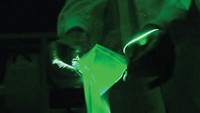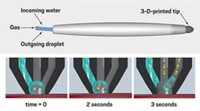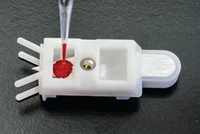Advertisement
Grab your lab coat. Let's get started
Welcome!
Welcome!
Create an account below to get 6 C&EN articles per month, receive newsletters and more - all free.
It seems this is your first time logging in online. Please enter the following information to continue.
As an ACS member you automatically get access to this site. All we need is few more details to create your reading experience.
Not you? Sign in with a different account.
Not you? Sign in with a different account.
ERROR 1
ERROR 1
ERROR 2
ERROR 2
ERROR 2
ERROR 2
ERROR 2
Password and Confirm password must match.
If you have an ACS member number, please enter it here so we can link this account to your membership. (optional)
ERROR 2
ACS values your privacy. By submitting your information, you are gaining access to C&EN and subscribing to our weekly newsletter. We use the information you provide to make your reading experience better, and we will never sell your data to third party members.
Analytical Chemistry
ACS Meeting News: Paper Spray Goes Head-To-Head With LC/MS
Ambient mass spec method yields comparable results for analysis of tamoxifen in blood
by Celia Henry Arnaud
March 20, 2014

Paper spray mass spectrometry provides comparable results to conventional liquid chromatography/mass spectrometry for drug analyses and has the potential to fundamentally change the way they are done, according to Ryan D. Espy, a graduate student with R. Graham Cooks at Purdue University. Espy reported on the work at a session in the Division of Analytical Chemistry at the American Chemical Society meeting in Dallas.
Paper spray, an MS method that requires no sample preparation beyond simply spotting a sample on a piece of paper, has the potential to reduce the amount of time and resources needed to do pharmacokinetic analyses—studies of the fate in the body of administered drugs—which are an integral part of the drug development process.
Nari Talaty, a senior research scientist at pharmaceutical company AbbVie who collaborated with the Purdue researchers, told C&EN that “paper spray MS enables the rapid analysis of compounds from low-volume blood samples. The ability to collect small-volume samples in an automated manner should improve our ability to monitor drug levels or biomarkers at the time of important pharmacological and toxicological events.”
The method requires only 10 μL of blood, “eliminating the need to sacrifice animals,” a practice that is often required in pharmacokinetic testing, Espy said. By using such small blood samples, researchers can collect more-frequent samples that could provide pharmacokinetic information that is more detailed and more accurate than is currently possible, he said.
“This was the first time we’ve taken real animal samples, not blood samples that we’ve spiked, and tried to determine whether paper spray provides accurate results,” Espy said. “We’ve always known that paper spray is quantitative and offers very precise results,” but the new study also found that the technique is accurate.
The researchers dosed rats with tamoxifen and then used paper spray MS and LC/MS to measure drug concentrations in blood samples. The paper spray method yielded a maximum drug concentration of 42 ng/mL, and LC/MS gave nearly a nearly identical result, 43 ng/mL.
And analysis was much faster with paper spray MS than with LC/MS. LC/MS required eight hours to run a set of 50 samples, but paper spray MS did the same analyses in 40 minutes.
The technology could also improve dried blood spot (DBS) analysis, which usually requires extraction of a sample from a piece punched out of a paper substrate. With paper spray, the entire spot is analyzed, potentially improving accuracy.
Neil Spooner, a researcher at GlaxoSmithKline who is a leader in dried blood spot analysis, said, “The technology is looking to simplify the analysis of DBS-like samples in that it does not require the sample to be punched and extracted in the laboratory.”





Join the conversation
Contact the reporter
Submit a Letter to the Editor for publication
Engage with us on Twitter